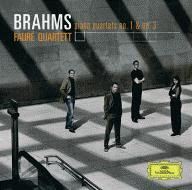Previously Unreleased Recordings from Piano Legend Vladimir Horowitz
 Monumental Traversals Of The Liszt Sonata And Mussorgsky’s Pictures at an Exhibition
Monumental Traversals Of The Liszt Sonata And Mussorgsky’s Pictures at an Exhibition
Recordings Taken From The Horowitz Papers At Yale University Available on June 30, 2009
Sony Masterworks expands the catalogue of its Carnegie Hall Presents series with a set of previously unreleased recordings by legendary pianist Vladimir Horowitz, one of the most important performers of classical music in the twentieth century. The Sony Masterworks release of The Private Collection: Mussorgsky and Liszt makes these dazzling performances, previously held in the archives of Yale University as part of Horowitz’s papers, available to the public for the first time on June 30, 2009.
This release features performances of Mussorgsky’s Pictures at an Exhibition, from April 2, 1948, and the Liszt Sonata, from March 21, 1949, both at Carnegie Hall. Two more Private Collection releases are scheduled for the fall and early 2010; they include music by Schumann, Chopin, Liszt, Haydn, and Beethoven.
In 1988, a year before his death, Horowitz donated to Yale University a treasure trove of original recordings composed of Carnegie Hall concerts and performances he gave during the 1930s, ’40s, and ’50s. Horowitz had employed an engineer to make 78-rpm recordings of his Carnegie Hall concerts in this period, and he used them to review and judge his performances. Most of these mono recordings were originally contained on 12- and 16-inch acetate discs. They have been impeccably mastered, with the sound restored, from new transfers made in the Yale archives. Significant press accompanied the original announcement of the donation of these recordings to Yale, where Horowitz performed often through the years and was an assistant fellow of Silliman College.
The first volume is classic Horowitz. He is in sovereign form for the Liszt Sonata, a piece associated with him throughout his career for its incredible virtuoso display, with its cascading runs punctuated by incisive chords. As David Dubal, professor of Piano Performance at the Juilliard School, mentions in his liner notes, “His Liszt Sonata was invincible.” Dubal adds that the private collection release is “more glorious than the 1932 recording,” which is typically considered the gold standard for performance of the sonata. Mussorgsky’s Pictures at an Exhibition demonstrates a different kind of fearlessness unique to Horowitz. His interpretive license as a transcriber of famous works and melodies—including his frequent encores, Variations on a Theme from ‘Carmen’ and Sousa’s Stars and Stripes Forever—has become a part of his legacy, but even in this context, his transcription of Mussorgsky’s Pictures is particularly bold. For Horowitz, there were no hallowed works, only great performances.
Born in Kiev in 1903, Vladimir Horowitz received early instruction on the piano from his mother, before studying with Sergei Tarnowsky and Felix Blumenfeld at the Kiev Conservatory, where he performed Rachmaninoff’s Piano Concerto No. 3 for his graduation in 1919. By the time he was twenty-one, he had toured Russia and found particular success with a series of concerts in Leningrad. His American debut at Carnegie Hall on January 12, 1928 was an eagerly awaited event. He married Toscanini’s daughter Wanda in 1933 and became a U.S. citizen in 1944. Horowitz’s specialty was the stormy, fearsome literature of the Romantic era—Liszt, Tchaikovsky, Rachmaninoff, Chopin—though he gave bracing performances of Clementi and Beethoven and championed the work of Scriabin and Prokofiev. He electrified audiences with his prodigious technique, from thundering fortissimos and floating pianissimos to lightning-fast octaves executed in perfect alignment. He remained a dominant force in music until his death in 1989, establishing a legacy as one of the most supremely gifted pianists of all time.

Comments